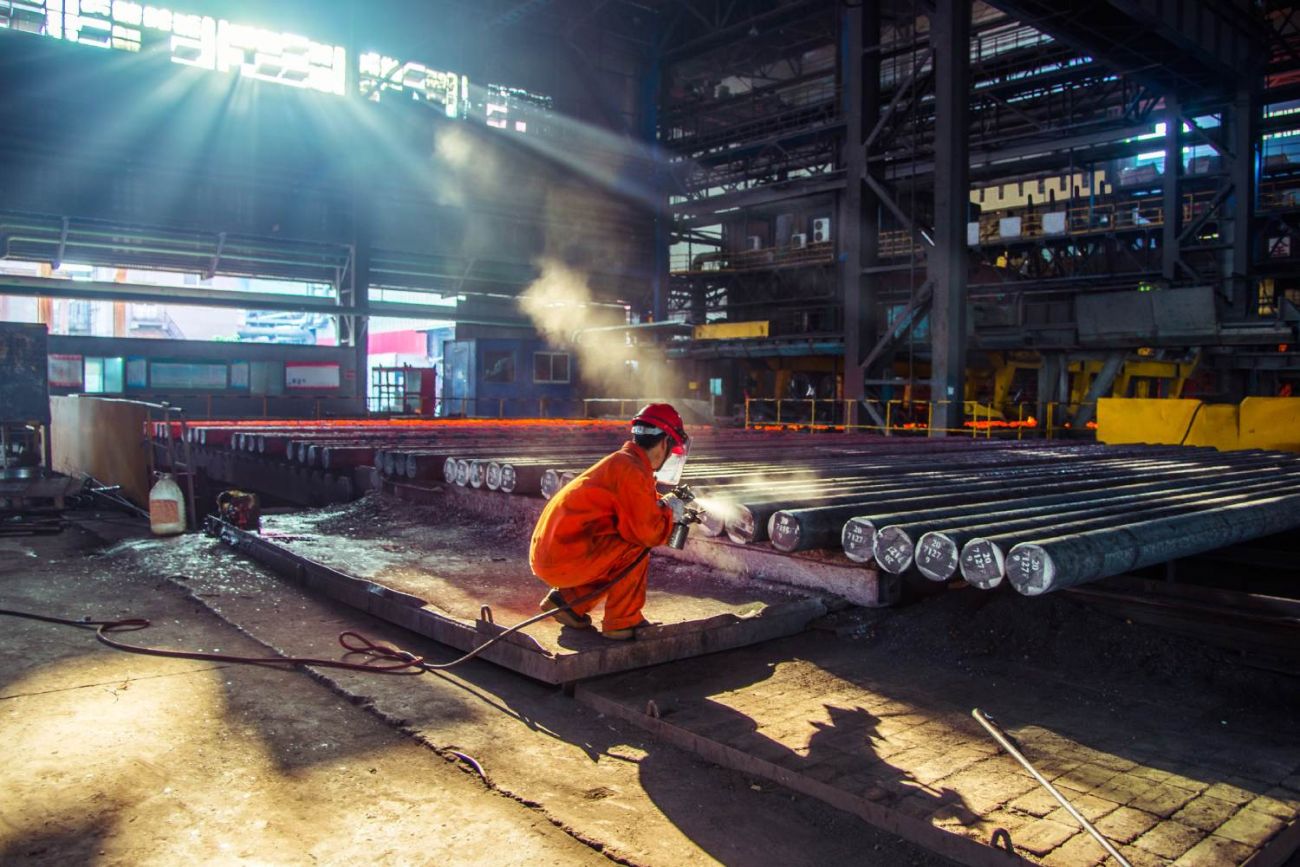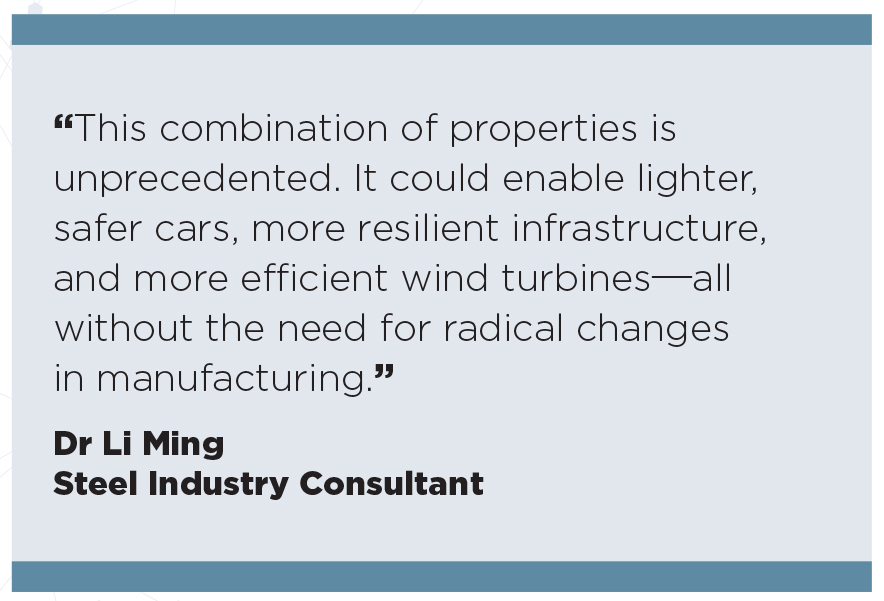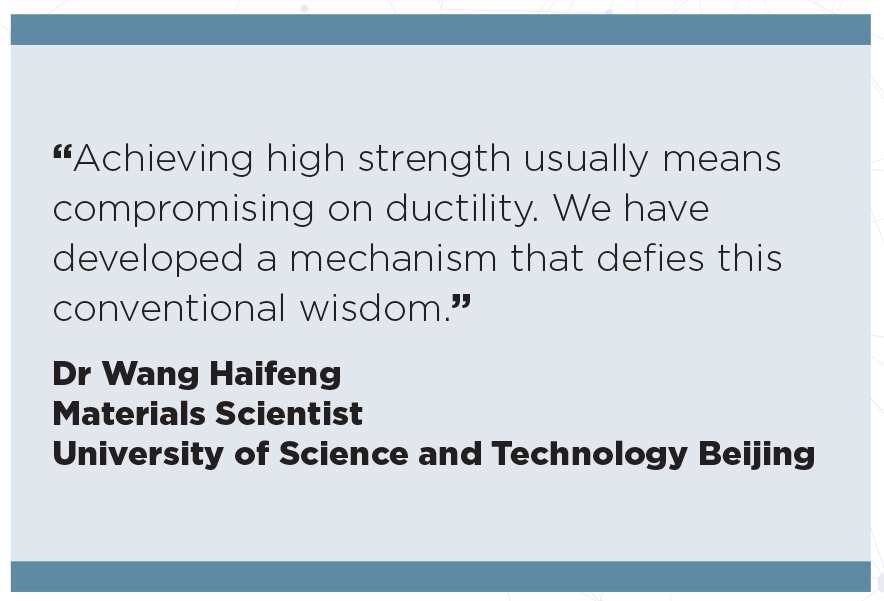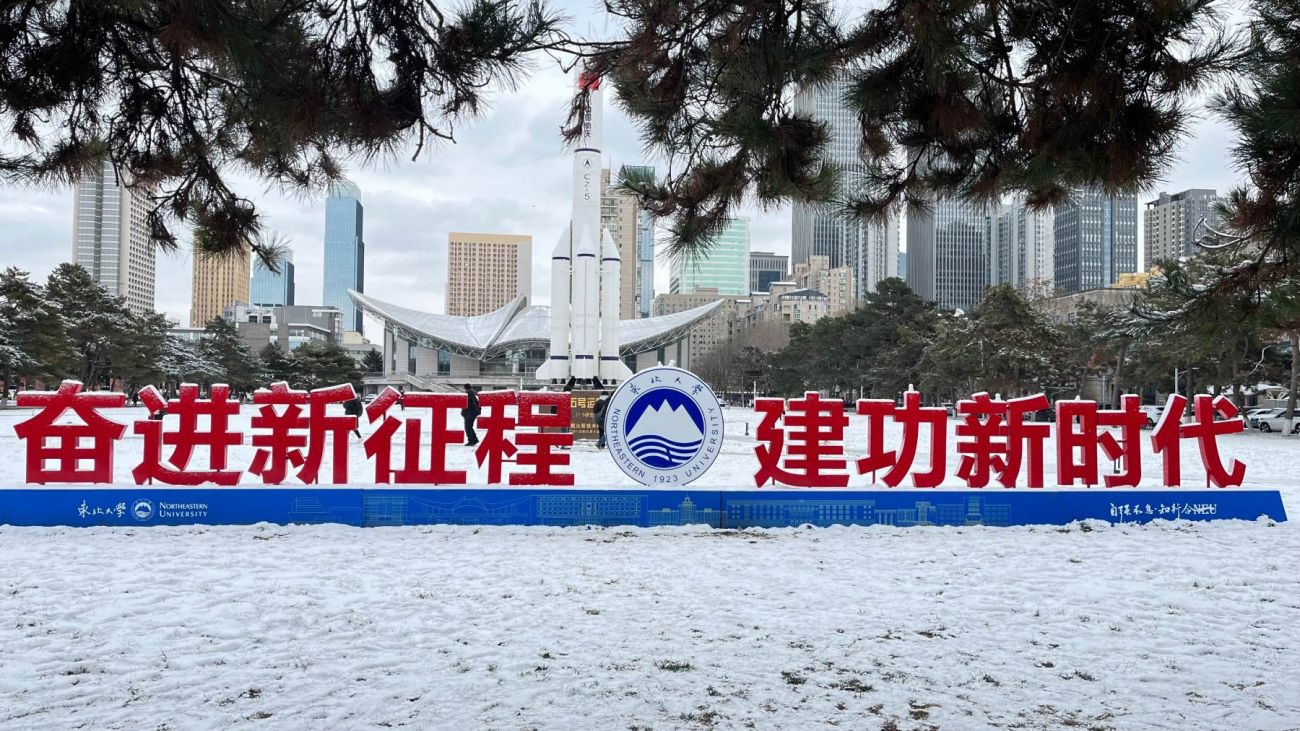BREAKING THE IRON CEILING

In a groundbreaking development poised to redefine modern metallurgy, a team of scientists led by researchers in China has unveiled a new type of steel that is both ultra-strong and unusually stretchable.
According to the team, a piece of the steel the size of a fingernail can bear the weight of a 2-tonne car without fracturing, and the ductile metal can also be stretched by 18 to 25 percent. The scientists said the material would have applications in the Vehicle, Aerospace and Machinery sectors, where it could be formed into complex shapes and absorb high energy from the impact of a collision.
Creating ultra-tough steel that can also be extended has been a major challenge for scientists because strength and ductility are usually mutually exclusive. But there is industry demand for such a material for use in lightweight and safe transport, construction and infrastructure.
The team—from Northeastern University in Shenyang, Shenyang National Laboratory for Materials Science and Jiangyin Xingcheng Special Steel Works in eastern China, as well as the Max Planck Institute for Iron Research in Germany—published its findings in the peer-reviewed journal Science in 2023, but trials to scale the production of sheets of the material that demonstrate consistent mechanical properties across large sections are ongoing.
The discovery centers on a novel alloy composition and microstructure that overcome one of the most persistent trade-offs in steel design. While conventional high-strength steels often suffer from brittleness—leading to catastrophic failure under stress—this new material retains tensile ductility even at ultra-high strengths exceeding 2 gigapascals (GPa).
The Ductility Dilemma
Steel’s strength and ductility—its ability to stretch without breaking—are governed largely by its internal crystalline structure and how that structure responds to stress. Over the past century, metallurgists have devised numerous ways to manipulate these features through alloying elements and heat treatments. However, the strengthening mechanisms, such as precipitation hardening or grain refinement, tend to impede dislocation motion, a key driver of ductility.
|
Northeastern University in Shenyang |
“Achieving high strength usually means compromising on ductility,” said Dr Wang Haifeng, lead author of the study and a materials scientist at the University of Science and Technology Beijing. “We have developed a mechanism that defies this conventional wisdom.”
The team’s solution lies in a clever orchestration of chemical composition and microstructural control. The new alloy is a complex, multiphase steel containing manganese (Mn), aluminum (Al), and carbon (C) in carefully tuned proportions. These elements interact to form a dual-phase microstructure comprising austenite and ferrite, two steel phases with vastly different mechanical properties. The interface between them becomes a critical zone where stress is redistributed and managed dynamically during deformation.
| Tech Talks is a column by industry veteran and journalist Reji Varghese that talks about the latest advancements in Machine Tools, provides snippets from history, interesting facts, etc. about the Machine Tool industry. |
Scaling the Innovation
Beyond the lab, one of the most compelling aspects of this discovery is its scalability. Unlike some exotic materials that rely on rare elements or prohibitively expensive processing, the components of this steel are relatively abundant and compatible with existing industrial workflows. The researchers emphasize that the alloy can be produced using conventional casting and rolling methods, making it a practical candidate for mass production.

The team has already conducted pilot-scale trials, producing sheets of the material that demonstrate consistent mechanical properties across large sections. The steel maintained a tensile strength above 2 GPa with elongation over 25 percent—a feat unmatched by most current commercial steels.
“This combination of properties is unprecedented,” said Dr Li Ming, a Steel industry consultant not affiliated with the study. “It could enable lighter, safer cars, more resilient infrastructure, and more efficient wind turbines—all without the need for radical changes in manufacturing.”
Broad Applications, Deeper Implications
The implications of this material breakthrough extend far beyond the laboratory. In automotive design, manufacturers face constant pressure to reduce vehicle weight for fuel efficiency and electrification without compromising crash safety. A steel that is both strong and stretchable offers an elegant solution, allowing engineers to design thinner, lighter components that can still absorb impact forces effectively.
In aerospace, where every gram counts and materials must endure extreme mechanical and thermal stresses, the alloy’s high performance could prove invaluable. Civil engineers could use it to construct earthquake-resistant buildings or longer-span bridges with fewer support columns. Even in consumer electronics, thinner and more durable chassis could become feasible.
More subtly, the innovation also advances fundamental materials science. By demonstrating that the strength-ductility trade-off can be circumvented through sophisticated microstructural engineering, the research opens new pathways in alloy design. It may inspire similar approaches in other metal systems like titanium, aluminum, and nickel-based superalloys.
| The new alloy is a complex, multi phase steel containing manganese (Mn), alu minum (Al), and carbon (C) in care fully tuned proportions. They interact to form a dual-phase micro structure comprising austenite and ferrite, two steel phases with vastly different mechanical properties. |
Impact For the Machine Tool Industry
The advent of this ultra-strong yet stretchable steel could have significant implications for the Machine Tool industry, both as an opportunity and a technical challenge. Machine tools are the backbone of modern manufacturing, tasked with shaping and forming materials into precise components. The new steel’s unique combination of high strength and ductility means that traditional machining, forming, and cutting processes may need to be reevaluated or upgraded to handle its behavior under stress.

From a tooling perspective, the steel’s high tensile strength (exceeding 2 GPa) will likely accelerate wear and tear on conventional cutting tools. Carbide and even some coated tools may struggle to maintain edge integrity over long production runs. This could drive increased demand for ultra-hard tool materials such as cubic boron nitride (CBN) and polycrystalline diamond (PCD), as well as next-generation coatings engineered for extreme hardness and heat resistance. Machine tool manufacturers will be under pressure to develop more robust spindles, higher-force forming systems, and improved thermal management strategies to accommodate the higher loads and friction this steel may generate during processing.
At the same time, the material’s exceptional ductility opens up new possibilities for cold forming and high-speed stamping—processes that typically struggle with brittle high-strength steels. Manufacturers could achieve more complex geometries with fewer cracks and failures, reducing the need for multi-step processing or thermal treatments.
| While conventional high-strength steels often suffer from brittleness—leading to catastrophic failure under stress—this new material retains tensile ductility even at ultra-high strengths exceeding 2 gigapascals (GPa). |
Towards the Future of Steel
Steel, in many ways, is the backbone of modern civilization. From the tallest skyscrapers to the smallest mechanical springs, its ubiquity is rivaled only by its versatility. But for all its utility, it has long been constrained by an inherent trade-off: strength versus ductility. This new discovery may finally provide a way to transcend that binary, offering a material that is not only tougher, but also more forgiving.
 |
Reji Varghese |




 Facebook
Facebook.png) Twitter
Twitter Linkedin
Linkedin Subscribe
Subscribe